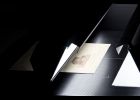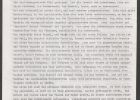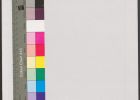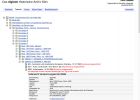Le diable, l’absurde et la philosophie / Extrait de L'Histoire du diable de Vilém Flusser: « La conversation »
This essay, a short introduction to the French translation of Vilém Flussers The History of the Devil, deals with some of the main aspects of the book, including the notion of sin and the figure of the devil, but also the dangers of nationalism, Marxism, the theoretical shortcomings of existentialism and Flusser’s interest in Buddhism. The accompanying extract from The History of the Devil, paragraph 6.4. Conversation, which is the last part of chapter 6. Envy and Greed, focuses on the notion of conversation, which is absolutely central to Flusser’s thinking. Its future ramifications extend to the concept of dialogue and go as far as the telematic society.
Libertad y poshistoria en la filosofía de la fotografie de Vilém Flusser
The object of this research is to trace Flusser’s thoughts on freedom and history as they appear in his philosophy of photography. The investigation focusses on the function of the author of the photograph in relation to apparatuses and programs. It extends, as I will try to show, to the activity of the spectator and of everyone who interacts with images. I follow Flusser’s methodology, which is to relate the philosophy of photography to the theory of games. And that's why I speak about the player, the toy and the game involved in photography. I think Flusser's main inspiration was Wittgenstein of the Tractactus and his theory of the emancipation of meaning from truth or factual falsity. Here I find the ontological key to his philosophy of photography as a philosophy of freedom.
Spotlyrics / NonDigitColors
The NonDigitColors project is based on a text by Vilém Flusser from 1991, “The Emigration of Numbers from the Alphanumeric Code.” . In this text, Flusser evokes, among other things, the fall of the alphabet: “The alphabet is about to be crushed by numbers on the one hand and images on the other hand, as by a pair of pliers.” The RGB (red-green-blue) system that determines color on most computer screens is hexidecimal: from sixteen available characters, it uses a six-character string to deliver any individual color, preceded by a pound sign (#). The project NonDigitColors uses a code of 6 letters: a, b, c, d, e, f to make up character strings. There are 46656 different permutations, or words or signs that become color values by the addition of the # sign. NonDigitColors are computer color codes that, paradoxically, do not consist of numbers. When the numbers “emigrate” from the hexadecimal code, only the “non-digital” codes remain.
The depiction as code establishes color as a linguistic construct. The project Spotlyrics refutes Flusser’s above-mentioned assertion and claims a place for letters in a modern, computerized, future-oriented world.
(Re-)Archiving Flusser
The Vilém Flusser Archive at the Berlin University of the Arts (http://www.flusser-archive.org/) holds and looks after the literary remains of the cultural theorist and philosopher Vilém Flusser. The archive identifies itself as an intersection in international research on Vilém Flusser, and endeavors to enhance accessibility to the work of this influential thinker. The aim of this article is to give a general overview on the individual collection of the archive and to describe its connections to the “mirror” archive in São Paulo and the Historical Archive of the City of Cologne. Among other topics, the authors of this paper report on the current situation of the digitization process of the Vilém Flusser Collection at the Cologne archive, while reflecting on future questions.
Technický obraz a logická stavba (Bau): Flusser a Wittgenstein / Das technische Bild und der logische Bau: Flusser und Wittgenstein
Both Wittgenstein and Flusser tried to find an answer to the question: how are media possible? Although Wittgenstein does not ask this question explicitly it can be detected in his Tractatus. Because of this fundamental similarity between both thinkers, it is possible to read Wittgenstein's theory of logical form from the point of view of Flusser's concept of techno-image and to interpret Flusser's notion of medium from the point of view articulated in Wittgenstein's Tractatus. At the same time, it is necessary to focus on their differences. Wittgenstein deals with the problem of the form of a significant world, while Flusser
focuses on the problem of specific artifacts, that is, technical images. For Wittgenstein a medium is generally one object placed among other objects. Flusser, on the other hand, is interested in a specific medium situated among other artifacts.





